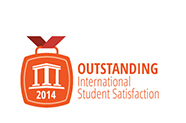Science & Technology: The Driving Forces of Economic Growth
Since the Scientific Revolution around 500 years ago, the global economy has been based on a model where new scientific developments lead to technological advancements, which fuel the world with increased productivity. This eventually led to economic growth and global prosperity, or financial turbulences whenever the model failed. This is an oversimplification of the dynamics of the economy. However, it still showcases the crucial role that science and technology play in humanity’s economic structure.
The global Gross Domestic Product from 1000 AD to now is a good figure to observe the relation between some important technological revolutions and the surge of growth they triggered. Steam engines, electrification, mass production and assembly lines, internal combustion engines, synthetic fertilizers, transistors, computers, and the internet are some of the important milestones in history that boosted global growth.
AI’s Cradle
Long before many technological advances, Greek mythology depicted the first autonomous robot in the form of Talos. This cultural quest continued throughout the years, as art expressed the passion and fear of people in creating an artificial being that could match or surpass human cognitive power. Who could forget the genius of Stanley Kubrick’s 1968 movie “2001: A Space Odyssey”, for example?
As artists imagined the future -often dystopian- scientists worked tirelessly to establish the foundations of a new era. The term Artificial Intelligence (AI) was introduced by computer scientist John McCarthy in 1956, in the early days of computing, while the famous Alan Turing suggested the Turing test, a method that assesses a machine’s ability to exhibit human-like intelligence and responses by asking it questions and comparing its answers with those of a human. This test has been the Holy Grail for many scientific disciplines that have dedicated themselves to the research of AI.
Many advances have occurred since then that we are experiencing in our daily life. From the hyper-personalized content we see in our social media timeline, to advanced systems that diagnose health conditions from PET scans, more accurately than a well-trained and experienced radiologist.
However, these systems are costly, can only be used effectively by large enterprises and governments, and usually are good at only one task at a time: One AI system knows how to rank what you see in your feed, nothing more. Another system knows how to detect a specific kind of anomaly in a PET scan, nothing more. This focus on specific tasks, has prevented AI from reaching human ingenuity. Passing the Turing test was still part of science fiction. AI drove economic growth for those who could afford it, but lowering the barrier of entry was essential to skyrocket the effects across humanity. AI desperately needed to become a General Purpose Technology. It took until the moment of the breakthrough; November 30, 2022, when ChatGPT was released to the public, to achieve this.
The Space in Between
By early 2023, hundreds of millions of individuals had experienced the magic of what is called “Generative AI”. An AI system that can generate well-thought text out of long dialogues, on the level of discussing with an expert in any potential subject. Besides text, it is also good with pictures, video, sound, and content generation, jumping out of a prompt, that could rival the professional work of many content and art creators.
People started using it for anything. From discussing a personal issue, to helping them with work, studies, or even generating lyrics for a song about their dog’s adventures in their backyard by mimicking Shakespeare’s writing style. Professionals started admitting that they use Generative AI to get inspired for high cognitive and specialized business requests.
Very quickly, this spread to almost any type of organization, in any industry. Besides the thought leadership that was happening across all the levels in organizations, technology vendors started offering Generative AI as part of their suite of products or as a platform for new developments. Very soon, the results came out: Those who successfully adopted it in their business enjoyed double-digit growth of productivity in some of their processes 1. At the same time, many whitepapers from credible analysts have claimed up to 350% Return on Investment for AI-related expenditures 2.
At the same time, humanity was called to discuss many philosophical and practical questions concerning the use of AI. While it brought significant strengths and opportunities, it also raised many weaknesses and threats that the global community needs to address fast, given the pace of innovation and the adoption of it.
If you are reading this article, and until this point you are not sure of what it talks about, or if you have never experienced it by yourself, then you need to be concerned. You are missing an advancement that is equivalent to electrification. It is like you live in a city where everything is electrified, and you are forbidden to use any electrical device or the benefits of it.
Personal View: How AI Affects Business
After the historical overview, I would like to adopt a personal tone and share my perspective on how AI impacts business. The era we live in is full of new and unexplored opportunities. As a current or aspiring leader, you will face challenges that are inherent to innovation, but with some nuances and a different context.
Having had hundreds of conversations with key stakeholders about AI, in various industries, here are my main insights to consider:
- The low barrier of entry does not imply a low barrier for adoption. People need to start thinking that they have a personal assistant supporting them and this requires a mindset shift. At the same time, they need to be educated about the peculiarities of this technology, and also about a skill that is often overlooked at school and few of us master: To ask the right questions. This comes with practice.
- Leadership should conduct and guide this change and the willingness for constant change should be embedded in the culture of the organization. The good news is that this message has been embraced from the beginning. I have discussed with dozens of C-level executives since around March 2023 and AI has become part of the strategy. The bad news is the well-known saying “culture eats strategy for breakfast”. That’s why it is essential for organizations that have not built the necessary muscles, to make it happen. Otherwise, they will miss a significant growth opportunity. Building muscles means changing, by building teams, structures, resilience, vision, and setting investments that support efforts towards AI.
- Considering another facet, efficient data management is the cornerstone of this change. “Garbage in, garbage out” is a saying that is very common in the circles of Data & AI experts. AI is a technology created and based on data. If you don’t maintain the right data, and the technical and human resources, the journey will be short in outcome.
- If you are not an AI-encultured organization, start small, think big. Start with small internal teams experimenting with technology and defining a use case roadmap. Start with low-risk projects, usually internal, that will create some room for gradual understanding and adoption, and when you are ready, scale to more important use cases. Invest in use cases that will bring tangible, measurable value to the business. You need quick wins while you’re planning big.
- AI should be part of business discussions and not isolated only to technical meeting rooms. Technical teams will have the know-how, but business needs to provide the know-why.
- Avoid self-restriction. Innovation should not be part of a sequential execution. I see several organizations limiting their potential by focusing on other, traditional, long-term challenges that need to be resolved. Innovation should be an independent firework, a spin-off, that needs resources and sponsorship to shine. The only difference with firework is that we don’t want innovation to fade out.
- Expect failures. It’s no stroll in the park. However, things are much easier than two years ago. Embrace the license to fail in your teams.
- Invest in responsible use of AI and security. It’s the only way to protect your investments but also to build an ethical approach to something powerful. It’s a tedious exercise, though. It needs multidiscipline voices to have the power to be heard. And guess what: This ties a lot with the culture you build.
- Finally, don’t forget about other important subjects and combine the newly acquired technology with them. For instance, your ESG goals are still important for you and your wider stakeholders. In the light of AI developments, some of us may have forgotten them. Use AI to help you with these goals. Stakeholders, in the wide meaning, will appreciate it.
Final Thoughts
This is only the beginning of a new era, where an opportunity for growth is spread around the world, besides the West Coast and Big Tech companies. This offers immense opportunities for innovation, growth, and prosperity, but also poses significant challenges for ethics, security, and equality. As leaders and citizens, we have a responsibility to understand, use, and shape AI for the common good. The future of AI is in our hands. Let’s make it a bright one.
Final comment: Please start today, not tomorrow.
References:
- Brynjolfsson, E., Li, D. and Raymond, L., 2023, Generative AI at Work, National Bureau of Economic Research.
- IDC, 2023, The Business Opportunity of AI.















